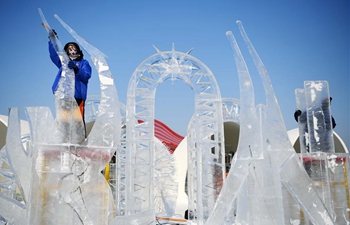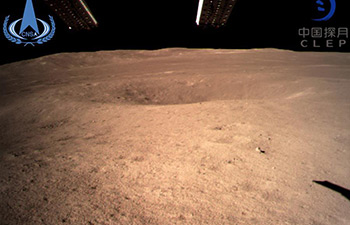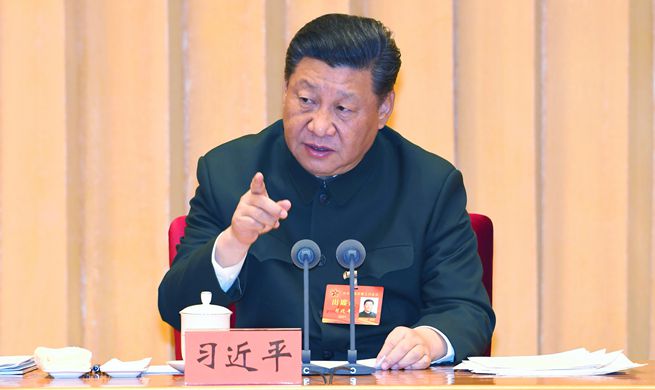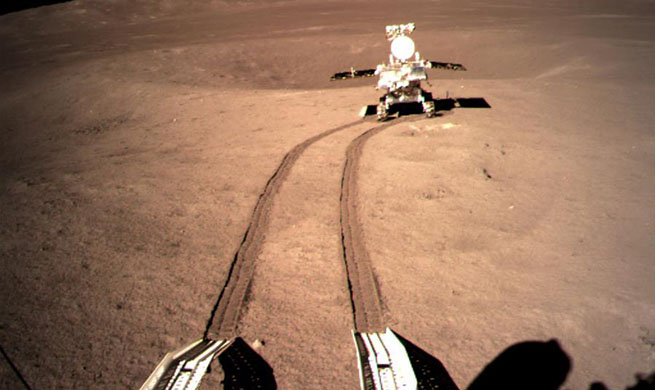BEIJING, Jan. 4 (Xinhua) -- China's successful landing of Chang'e-4 spacecraft on the dark side of the moon is hailed by astronomers worldwide as a great achievement, and many expect breakthrough findings from the probe.
NASA Administrator Jim Bridenstine said on his twitter account Thursday that the landing is "a first for humanity and an impressive accomplishment!"
Johan Koehler, head of Solar System Science and Space Situational Awareness, Swedish National Space Agency, said exploration of the far side of the moon was a great achievement by China. "We are very happy to be a part of it."
The Chang'e-4 probe is equipped with instruments developed by scientists from Sweden, Germany and China to study the lunar environment, cosmic radiation and the interaction between solar wind and the moon surface.
"There is a theory that water on the surface of the moon is formed by the interaction of solar wind with the surface regolith. So this is something that Swedish scientists together with Chinese scientists want to answer," said Koehler.
Ian Crawford, professor of planetary science and astrobiology at Birkbeck, University of London, told SpaceNews Magazine based in the United States ahead of the event that a safe landing would be a "fantastic achievement."
"This will give valuable information on the composition of the far side crust and, conceivably, the upper mantle ... The radio astronomy experiments are also of great interest, which may lay a foundation for the development of lunar far side radio astronomy," Crawford said.
Fred Watson, who promotes Australia's astronomy endeavours as its astronomer-at-large, told BBC that "the Chinese space agency is a young organisation, but perhaps in years to come, it will catch up."
Landing on the unexplored and rugged far side of the moon is not easy, and Chang'e-4 is the first craft that has ever made it.
"Landing on the far side of the moon is an amazing technical achievement because there is a significant amount of time when the vehicle is out of contact with earth," said Eugenio Fontan, the Managing Director of the Madrid Aerospace Cluster.
"The Chinese probe has had to land on its own. That is something very few space agencies have the capacity to do," he highlighted.
The moon is tidally locked to earth, rotating at the same rate that it orbits Earth, so only one side of the moon is seen from Earth, leaving the far side a complete mystery, until now.
"The far side of the moon has unique features never before explored on site," said Zou Yongliao, director of the lunar and deep space exploration division of the Chinese Academy of Sciences (CAS). "The exploration of this virgin land by Chang'e-4 might bring breakthroughs."

















